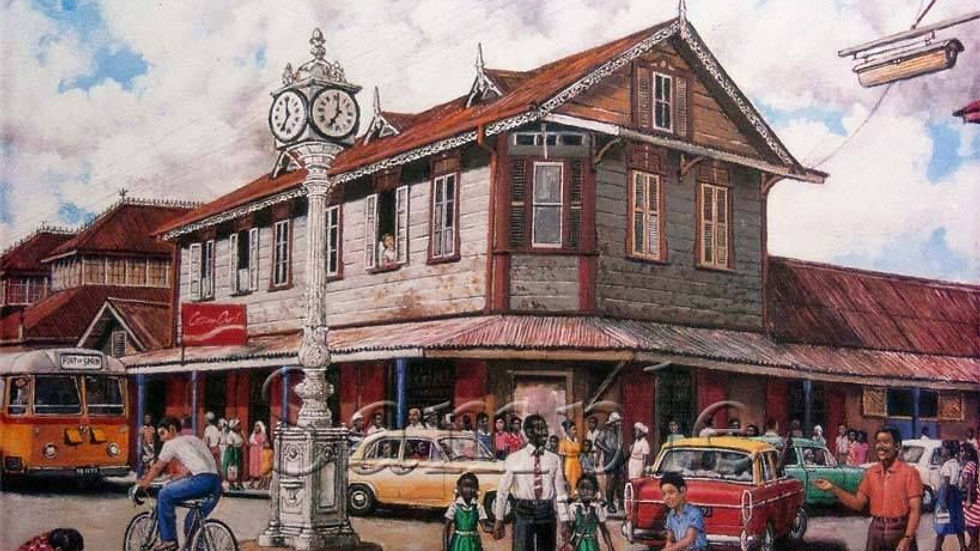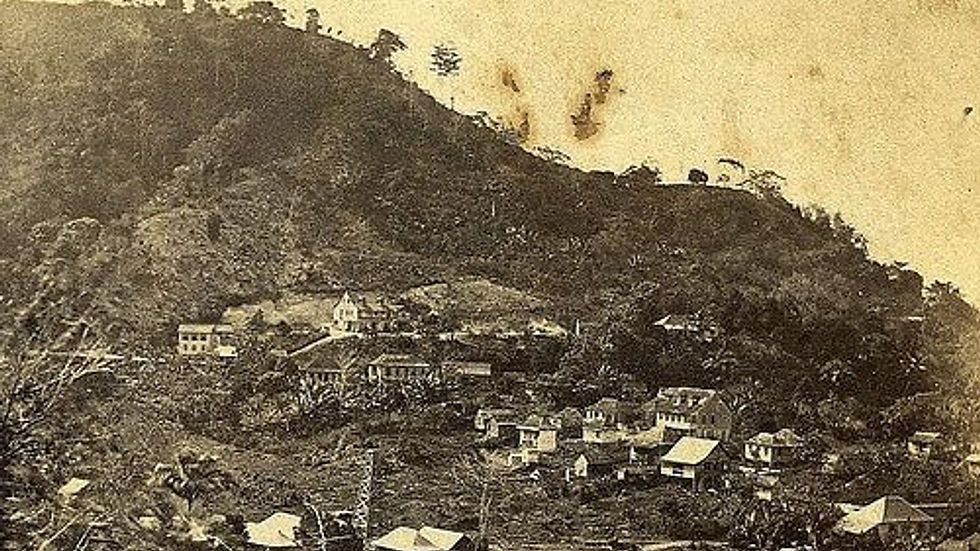The Last 50 Years: The Changing Face of the Royal Borough of Arima
- Admin

- Feb 12
- 4 min read
Updated: Jun 24
By Thomas Isaac
A Glimpse into Arima's Past
The cottages were all still lovely wooden bungalows, featuring jalousied windows. Often, they had a front portico decorated with flowering plants and surrounded by fruit trees. Many included a latrine in the backyard, accompanied by some chickens, a dog, and a cat. By the late 1950s, these charming houses began to give way to brick and concrete structures. The bricks were typically built on-site. The outhouse was replaced with modern toilet facilities and running water inside the house.

The Shift of Modernization
By the early pre-independence period, much of nineteenth-century Arima remained intact. However, it was wilting under the relentless onslaught of change and modernization. Arima retained a semi-urban settlement feel, nestled amid large and medium-sized plantations of cocoa, coffee, citrus, and sugarcane. These areas were sprinkled with fruit trees of every conceivable tropical kind.
The Surrounding Landscape
Beyond the plantations lay the wilderness of Waller Field, with numerous mountains and lowland communities surrounding Arima. In the east was Valencia, in the southeast Cumuto-Talparo, in the north Paria and Blanchicheuse, in the south Carapo, and in the west D'Abadie. The large estates remained but were no longer as productive or functional as before, following the arrival of the Americans in the 1940s.
The estates generally carried the names of their old owners: De Gannes, Coon Coon, Madoo, Cleaver, Cipriani, Mason, Torrecilla, Santa Rosa, Di Martini, Strickland, Mendez, Samaroo, De Verteuil, and Gran Poder (Quesnel).
Heritage and History
These names tell a lot about the area's history, illustrating the pre-eminence of the old French plantocracy, the survival of a Spanish element, the arrival of the English, and the rise of new East Indian magnates. Some of these new residents lived along Railway Street and Pro Queen Street in beautiful wooden mansions.
Estate owners had moved away from the land. Many white families reverted to living in the West, renting out their lands to small local gardeners. This process had begun during the war period, with some attempting to produce crops on a commercial basis for the Sunday market. The small agricultural plots were soon populated with dwelling houses, leading to the rise of new residential communities. Many of these communities were beyond the prescribed boundaries but were fully part of the Arima community.
Districts of Arima
During the 1950s and 60s, Arima, like many older towns, could be clearly divided into distinct residential districts. Each district was marked by visible ethnic and socio-economic differences. The spiritual heart and historical center of Arima remained around the RC church. This area extended from De Gannes Street to Hollis Avenue, Robinson Circular, and Prince Street to Beckles Lane.
In the 1950s, Netto Ville was built by a Portuguese businessman, Charles Gomes Netto. He served as a legislative council representative for the area during the latter years of the Crown Colony Government under Sir Hubert Rance's governorship. The two-apartment houses were constructed in a new architectural style, featuring concrete and brick, all covered with galvanized roofing.

The Expansion Beyond Netto Ville
Westward beyond Netto Ville lay an expanding residential area occupying former estate lands. This area stretched westward to Olton Sawmill and lands owned by the Irish families of the Oltons and Baileys (of Brandon Bailey fame). The western boundary was marked by the Cleaver Woods, a strip of verdant tropical forest. It provided a refreshing corridor for travel from Port of Spain.
To the east, beyond Prince Street and over a massive concrete drain that had once been a small rill, was the district known as “Over the Bridge.” This area was populated by the original Spanish-speaking residents, many maintaining family connections to the villages of the Northern Range. Many had agricultural smallholdings of cocoa and coffee in the countryside.
The Vintage Cocoa-Payol Population
These residents were predominantly Roman Catholic and generally fair-skinned, with Spanish first and surnames. They constituted the vintage cocoa-payol population of Arima. South of the savannah on Robinson Circular, a line of beautiful wooden bungalows, reminiscent of the old estate great houses, was occupied by estate owners and their descendants, like the Crows and De Gannes. These families were instrumental in establishing horse-racing in the Arima savannah.
The coming of independence brought drastic social and demographic changes, prompting many estate owners to leave Arima. Even so, they continued to maintain the Arima White People's Carnival. This event took place during festivities at the White People's Tennis Court on Railway Street.
Distinct Southern Districts
To the south, two distinct districts emerged. Malabar, in the southeast, stretched southward along the Malabar Road to O'Meara Savannah. Meanwhile, Samaroo Village extended southwest along O'Meara Road, also reaching the same savannah. The southern end of Malabar, beyond the train line, was known as India. Its population consisted of ex-indentured workers still involved in sugarcane production but gradually shifting towards vegetable cultivation, cattle-rearing, and milk production.
Another southern extension along Prince Street led into the Cocorite Road/Tumpuna Road area. This area had a significant East Indian population that contributed to Arima’s fantastic Hosein celebrations. Unfortunately, these celebrations eventually faded away with independence and the arrival of Better Village.
Conclusion
Finally, beyond the Arima River to the east lay the village of Maturita. This area extended down into Pinto Road towards the Santa Rosa estate. As we reflect on the last fifty years, it is clear the face of Arima has shifted dramatically. The vibrant culture, diverse communities, and complex history continue to shape its identity today.
Arima Borough Corporation Jubilee Publication 2012



Comments